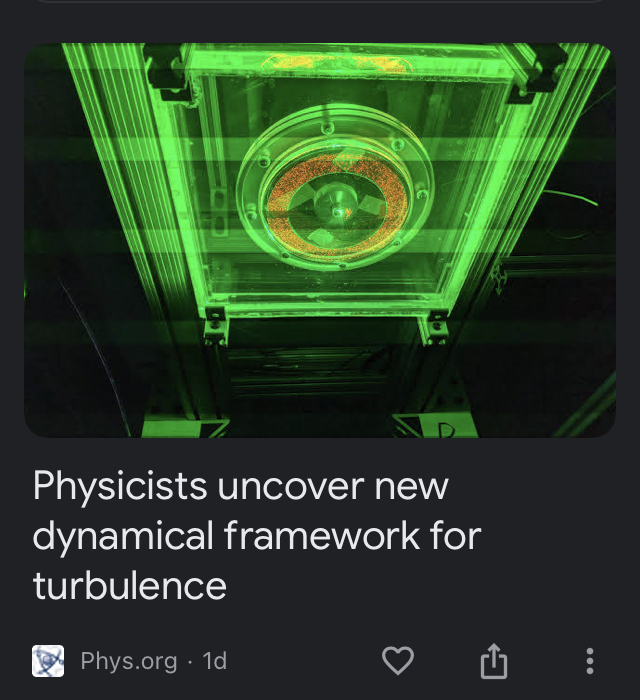
Now, physicists from the Georgia Institute of Technology have demonstrated—numerically and experimentally—that turbulence can be understood and quantified with the help of a relatively small set of special solutions to the governing equations of fluid dynamics that can be precomputed for a particular geometry, once and for all.
"For nearly a century, turbulence has been described statistically as a random process," said Roman Grigoriev. "Our results provide the first experimental illustration that, on suitably short time scales, the dynamics of turbulence is deterministic—and connects it to the underlying deterministic governing equations."
The findings were published in Proceedings of the National Academy of Sciences on August 19, 2022. The team of researchers was led by Grigoriev and Michael Schatz, professors in the School of Physics at Georgia Tech who have collaborated on various research projects over the past two decades.
....
The researchers created a new "roadmap" of turbulence by looking at a weak turbulent flow that was confined between two independently rotating cylinders—giving the team a unique way to compare experimental observations with numerically computed flows, due to the absence of "end effects" that are present in more familiar geometries, such as flow down a pipe.
....
It is well-known that turbulent fluid flows exhibit a repertoire of patterns—referred to as "coherent structures" in the field—that have a well-defined spatial profile but appear and disappear in an apparently random manner. By analyzing their experimental and numerical data, the researchers discovered that these flow patterns and their evolution resemble those described by the special solutions they computed. These special solutions are both recurrent and unstable, meaning they describe repeating flow patterns over short intervals of time. Turbulence tracks one such solution after another, which explains what patterns can appear, and in what order.
....
"All the recurrent solutions that we found in this geometry turned out to be quasi-periodic—that is, characterized by two different frequencies," said Grigoriev. One frequency described the overall rotation of the flow pattern around the axis of symmetry of the flow, while the other described the changes in the shape of the flow pattern in a reference frame co-rotating with the pattern. The corresponding flows repeat periodically in these co-rotating frames.
